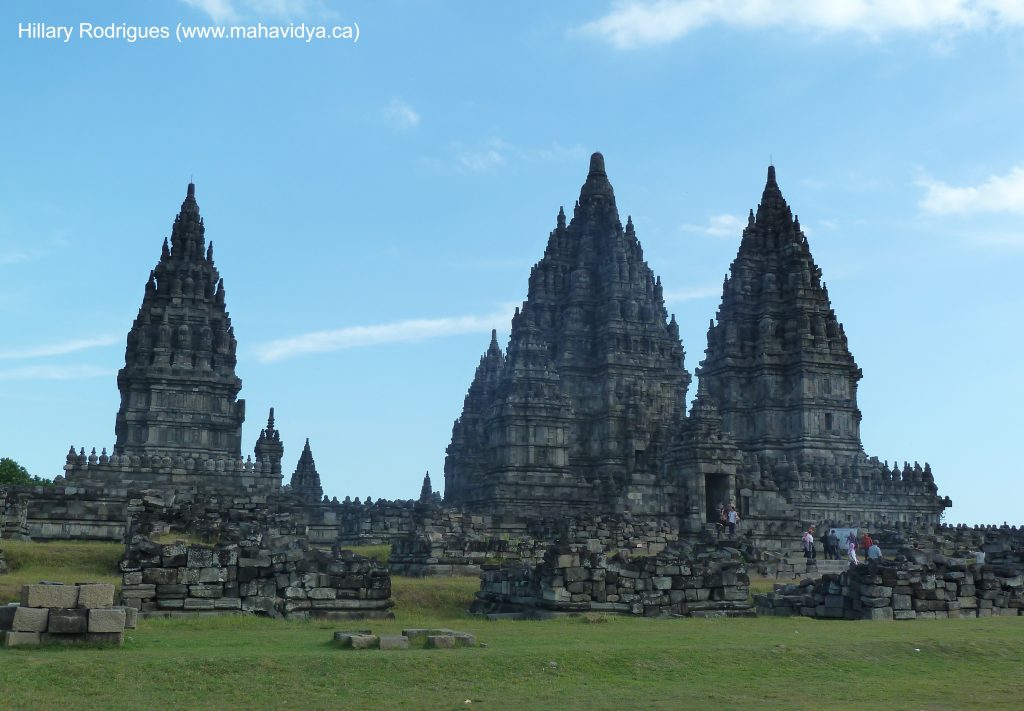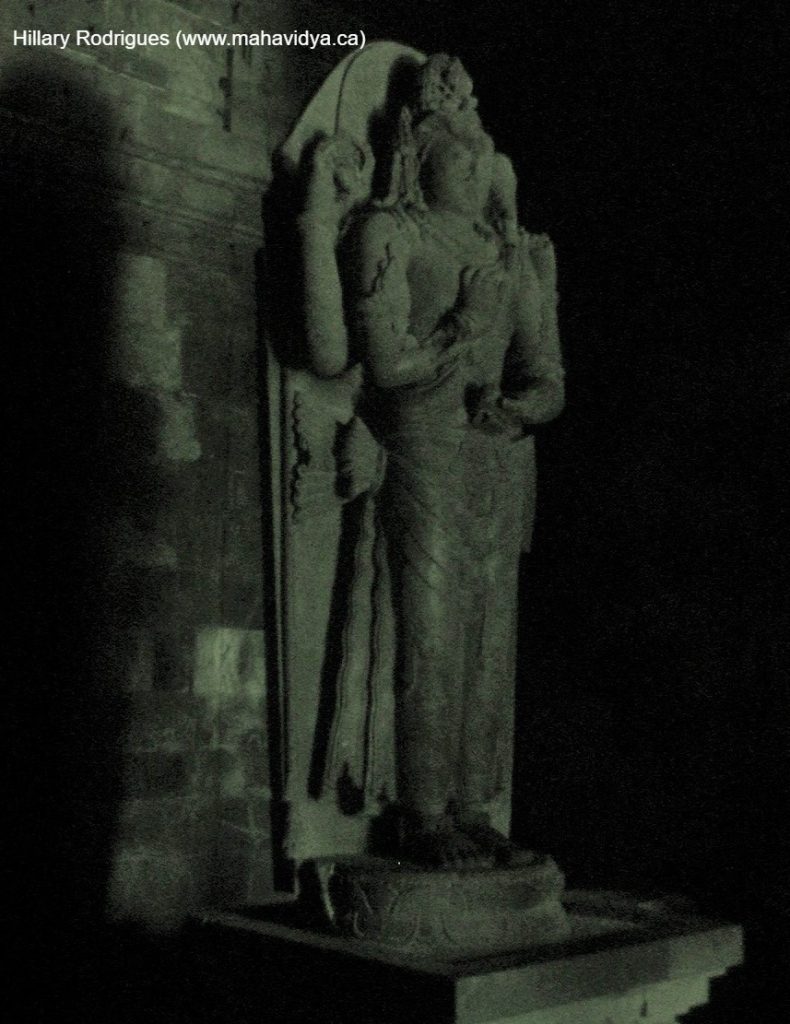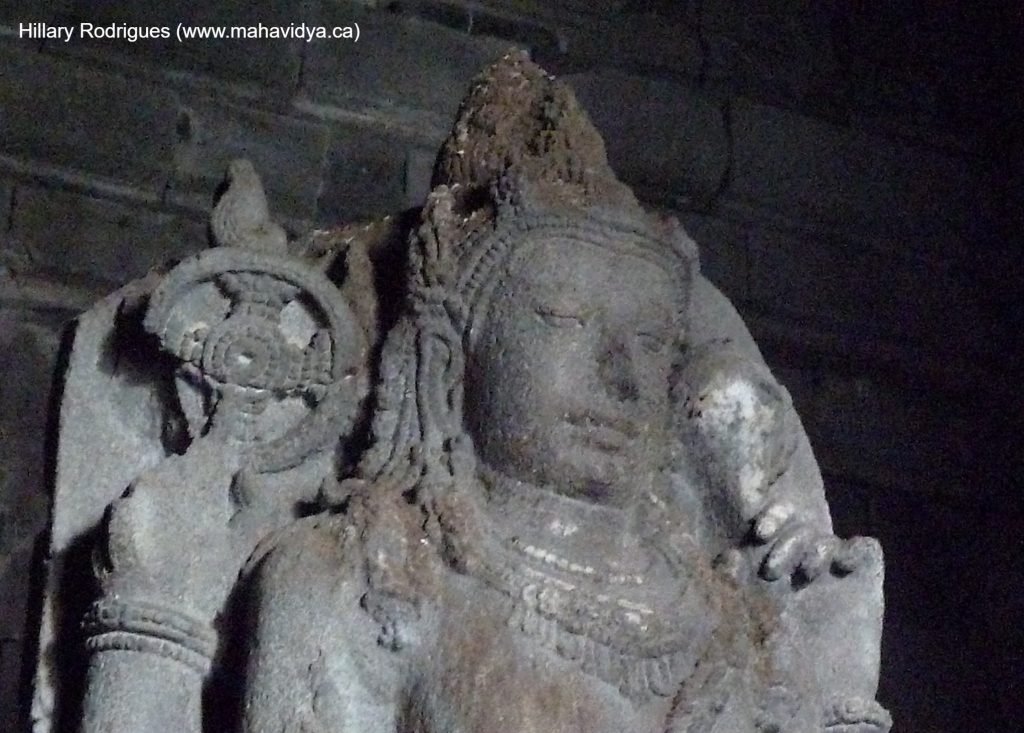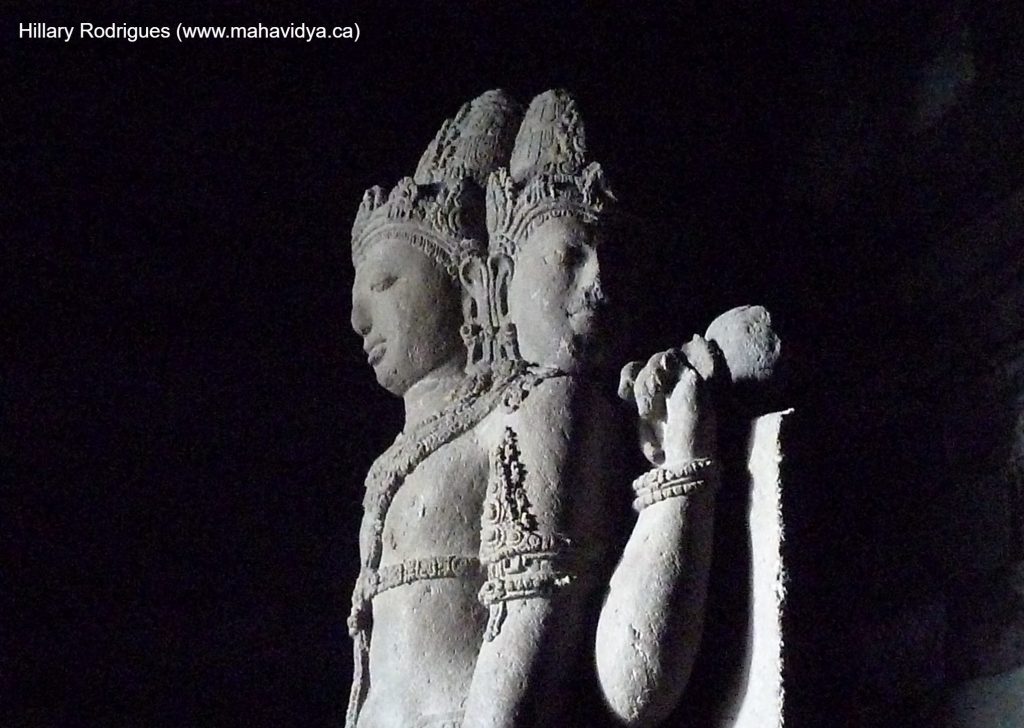The use of intoxicants in the Hindu tradition varies depending on the substance. Specific substances are mentioned in sacred writings, such as the alcohol in the Ayurveda and cannabis in the Atharva Veda (Frawley 1 and Shivaharidas 2). Highly regarded substances are used sacredly during rituals, as offerings to gods and goddesses. Furthermore, there are over one hundred Vedic hymns praising Soma, one of the most highly regarded intoxicants in the Hindu tradition. Certain substances are associated with particular deities and incorporated into precise myths. These important substances are understood widely in the Hindu tradition and considered very holy (Godlaski 1067). Other substances are recognized as harmful and individuals are advised to use caution when consuming them. There is no specific set of rules for Hindus to follow regarding intoxicating substances (Frawley 1). However, many Vedic scriptures discuss the use of intoxicants and can be referenced as a guideline. Based on the understanding of Dharma, individuals must recognize how intoxicants will affect them in relation to cosmic order. It is challenging to comprehend how mind-altering substances, can fit in with the natural laws behind the universe. The many ancient writings of the Hindus serve as a guideline when becoming involved with intoxicating substances, and should be referenced in order to obey a virtuous Hindu lifestyle.
The core beliefs and practices surrounding alcohol in the Hindu tradition are based on caste-related permissive uses. For example, alcohol restrictions were placed on the high-caste brahmins (Sharma 9), furthermore the Rg Veda states that ksatriyas (the warrior class) were allowed to use alcohol on occasion in coherence with their military culture. The lower castes such as the vaisyas and sudras had few restrictions on alcohol use, based on their social status. These lower classes do not have societal obligations to attend to therefore alcohol usage is permitted. The Brahmins (priestly class) refrain from alcohol because within the caste system they are of a closer ranking to the gods, which means that intoxicating substances are offered to deities instead of ingested. The Brahmin class must remain pure and mentally clear in order to worship the gods and have them remain unpolluted. Alcohol is an important aspect within religious events and festivals (Frawley 1), but the Brahmin class does not consume.
The Vedic scriptures can be referenced in order to understand when alcohol is appropriate to use in the Hindu tradition. Alcohol is an important aspect during religious ritual and becomes a traditional feature of social gatherings, however it can be sinful and dangerous when used incorrectly. Within the post-Vedic period (700 BCE-110 CE), strong alcoholic beverages were served to guests on certain occasions, such as marriage. Occasions like this are seen as appropriate times to take part in alcohol consumption, but following the guidelines of Vedic scripture it is only used in seldom (see Sharma 9). Furthermore, the use of alcohol is mentioned in two of the greatest Indian epics, the Ramayana and the Mahabharata, two great Hindu stories that are widely acknowledged, which provide reference to alcohol usage that the public can respect and incorporate into their personal lives. Within the Ramayana the royal individuals are drinking wine, and many people of Ayodhya are also consuming large amounts of alcohol (Sharma 10). Alcohol is mentioned frequently within the Mahabharta, the demise of the Yadavs (a warrior dynasty) was due to fighting while inebriated (Sharma 10). This epic also mentions that drinking alcohol can be sinful, and alludes to the demise of a warrior dynasty to describe its potential side effects. This piece of the epic is important to understand intoxication within the Hindu culture. A great warrior class failing due to inebriation is an important lesson to guide an individual to understanding how intoxicants can negatively affect the state of mind. Hinduism acknowledges that alcohol is a powerful affluence, and that its influence should not be taken casually (Frawley 1).
The Ayurveda literature also contains views on the use of alcohol. Within this medical section of the Hindu Dharma, alcohol is used as an important solvent for extracting herbs; it is used as an essential tool within this text (Frawley 1). The Ayurveda also mentions two important herbal wines, asavas and aristas, which are used for weak digestion and relaxants for stress. The Ayurveda recognizes that herbal wines can have health benefits, but only when taken in moderation. This text expands on the dangers associated with alcohol use. Stating that frequent consumption can cause both psychological and physical disease. The dangers of alcohol use become relevant when it comes to an individuals’ state of mind: not only can frequent use of alcohol damage the liver, contribute to blood toxicity and also damage the brain, but it is also important to recognize that for studying students and religious individuals, it can impair mental judgment (Frawley 1). Mental clarity is an essential component in achieving moksa, and by purposely impairing an individuals mind; they are further away from attaining this ultimate goal. This kind of intoxication is predominantly viewed as negative within the Hindu tradition because of the health risks and addiction associated with this particular substance.
The use of cannabis in the Hindu tradition is widely explored within the Atharva Veda in which “cannabis is named one of the five most sacred plants on Earth” (Ramadurai 1). Vedic and Hindu literature mention cannabis for its medicinal, cultural, and religious usages. Cannabis has been used for thousands of years in the worship of the god Siva (Godlaski 1067). It is orally administered through bhang in the form of pills, or a drink made of milk and spices. It is commonly consumed at celebrations such as weddings and festivals to honor Siva and dispel evil influences caused by demons, which focus on the suffering of mankind. At festivals like Shivratri, the night of Siva and Holi, the festival of colors, bhang plays an important role. The holiness of bhang reverts back to its virtue of clearing the head and stimulating the brain (Shivahardias 11). It is used in order to clear the human brain and bring individuals closer to the gods. Cannabis is believed to have a guardian spirit whose most important duty is to counteract the attempts of evil demons. Worshippers of Siva consume bhang on festival days, and ascetic holy men smoke the flower buds in devotion to him. These holy men (sadhus) follow Lord Siva and consume regular quantities of cannabis. Most often, they smoke buds of the flower in clay pipes, called chillums, which are used in rituals of meditation, worship and yogic practices (Godlaski 1069). The ashes of the buds are believed to have powerful medicinal properties.
These specific practices are codified in the Vedas, which describe an association between Siva and cannabis. It states that a drop of amrta (sacred nectar), fell out of the sky, landed on a mountain and sprouted a cannabis plant. Siva then brought the plant down for the benefit of mankind (Godlaski 1068). This story recounts how the use of cannabis is associated with the god Siva. The same story continues to describe how demons attempted to use the cannabis plant for their own evil usage; Siva prevented this and so cannabis has also been given the name, vijaya (victory).
Cannabis in the Vedas is referred to as a source of happiness, and given to human beings to assist us in feeling happiness and to revert feelings of distress and anxiety (Godlaski 1068). The Atharva Veda continues to mention the benefits of cannabis and how it is able to “release us from anxiety” (Atharva Veda 11.6.15). It is described as a protector, and is used to protect all animals and properties (Shivaharidas 2). Cannabis is therefore sacred, significant and respected in the Hindu tradition and is highly beneficial to Hindu society as both a medicine, and religious property.
In Vedic literature, the use of Soma can be identified as a plant, a drink and a god (deva). It is highly glorified within the Vedas, most importantly within the ninth mandala of the Rg Veda (McGeough 1). This mandala compares Soma to the sun, fire and immortality. Soma is directly correlated with the Rg Veda, because it has over 100 hymns dedicated to the plant, and plays a crucial role in understanding its effects. Soma is also mentioned within the Satapatha Brahmana, “Soma is a God, since Soma (the moon) is in the sky” and “now Soma is a god, for Soma was in the heaven” (Shivaharidas 1). The various descriptions and metaphors for Soma provide emphasis to the importance of this Vedic god within the Hindu tradition. It is physically referred to as a god, and put on the same pedestal as the heavens. It is glorified within sacred writings, and its power is clearly influential.
Similar to cannabis, it is described within the Rg Veda as the healer of disease, which renounces feelings of anxiety and stress and named the king of plants (McGeough 1). Vedic descriptions of Soma vary: it has been speculated to be cannabis, the ephedra plant, wine or a mushroom. However, it is unlikely that Soma is a type of alcohol since alcohol has other names within the Vedas and alcoholic intoxication is not seen as a positive influence within Vedic literature. It is most likely that Soma is a type of hallucinogenic mushroom, because of its appearance and intoxicating effects, however this theory cannot be proven with certainty (McGeough 1).
There are no other types of intoxicants in the Hindu tradition that produce the same effect as Soma. Primarily, Brahmin priests used Soma to be connected with the gods during Vedic rituals. Soma clearly plays a very significant role within rituals, and the Hindu tradition as a whole. Vedic deities also consume large amounts of Soma, such as Agni (god of fire) and Indra (lord of the thunderbolt) (Rg Veda 108. 1-13). It is the favorite drink of these gods, and is supplied to mortal human beings so they may find happiness. Soma is able to provide humans with mystical experiences and contributes to the connection between human and deities within the Hindu tradition.
The connection between the use of cannabis and the use of Soma within the Hindu tradition is evident. Hindu history even suggests that these two intoxicants might be the same substance (Shivahardias 1). Both substances are used for relaxation, mental clarity and used within religious rituals. These two substances are highly regarded within society, and mentioned frequently within ancient writings. Users of these intoxicants practice usage frequently, and it is normalized within their society. On the contrary, the use of alcohol is recognized as a more harmful intoxicant and its users are advised to proceed with caution when consuming. The Hindu tradition recognizes the possible harmful consequences that occur with intoxicants (predominantly the use of alcohol), such as the harmful effects of over consumption. Particularly within the Ayurveda, these harmful consequences are explored and explained.
In order to follow a Dharmic lifestyle and understand the concepts of Karma, one should not participate in over consumption of any intoxicant due to their hallucinogenic and mind-altering properties. Referring back to the ancient Hindu texts and epics can guide the individual toward understanding when and where intoxication is appropriate and how to use mind-altering substances appropriately. These writings not only serve as a guideline when it comes to intoxication in Hinduism, but also how to live a virtuous Hindu lifestyle. The negative consequences associated particularly with alcohol usage within Hinduism should be understood and acknowledged before individuals decide to partake in consuming intoxicants.
REFRENCES AND FURTHER RECOMMENDED READING
Alfred, J. Andrea (2011) World History Encyclopedia. Santa Barbara: ABC-CLIO.
Frawley, David (2014) “A Hindu view on the use of alcohol.” The Hindu Perspective. Hindu Voice UK. Accessed October 8, 2018. https://hinduperspective.com/2014/03/22/a-hindu-view-on-the-use-of-alcohol-david-frawley/
Godlaski, Theodore M (2012) “Shiva, Lord of Bhang, Substance Use & Misuse.” Substance Use & Misuse. Vol. 47, Issue 10. P1067-1072. DOI: 10.3109/10826084.2012.684308
Ramadurai, Charukesi (2017) “The intoxicating drug of an Indian god.” BBC Travel. BBC. Accessed November 27th, 2018. http://www.bbc.com/travel/story/20170307-the-intoxicating-drug-of-an-indian-god
Shivaharidas (2012) “Vedic use of Cannabis “ Scribd, BY-NC. P1-12.
The Editors of Encyclopaedia Britannica (1998) “Soma” Encyclopaedia Britannica: Britannica Academic. Encyclopaedia Britannica inc.
Related Topics for Further Investigation
Devi
Rayamana
Mahabharta
Rg Veda
Vija
Asavas
Arishtas
Karma
Dharma
Agni
Indra
Ayurveda
Siva
Cannabis
Soma
Holi
Shirvrati
Yadavs
Noteworthy Websites Related to the Topic
http://mahavidya.ca/2008/04/14/soma-mysterious-vedic-plant-and-deity/
https://en.wikipedia.org/wiki/Soma_(deity)
https://www.psychologytoday.com/ca/blog/the-teenage-mind/201106/history-cannabis-in-india
https://www.quora.com/What-is-marijuana-used-for-in-Hinduism
https://www.weedweekly.com/where-does-hinduism-stand-on-marijuana/
https://www.religiousforums.com/threads/hinduism-and-alcohol.148753/
http://www.sacred-texts.com/hin/hmvp/hmvp12.htm
Article written by: Leah Paul (November 2018) who is solely responsible for its content.



